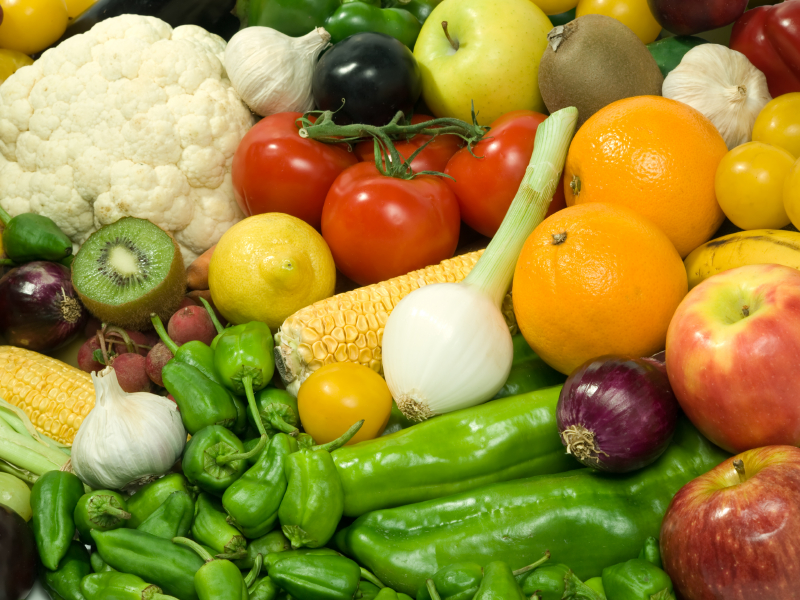
THE FRENCH
FOOD
INDUSTRY'S PORTAL
Webzine
taste it to info

Fruit and vegetables from French overseas collectivities – Exotic flavors with a French twist
News /
Friday 12 June 2015
 Overseas fruit and vegetable crops are mainly concentrated in the DROM (Overseas Departments and Regions): Martinique, Guadeloupe, Guyana and La Réunion. The other collectivities’ main activities are fishing and cattle farming.
Overseas fruit and vegetable crops are mainly concentrated in the DROM (Overseas Departments and Regions): Martinique, Guadeloupe, Guyana and La Réunion. The other collectivities’ main activities are fishing and cattle farming.
An overseas specialty
Apart from Guyana, overseas collectivities are marked out by their insularity. This geographical characteristic presents advantages when growing fruit and vegetables and other food crops (plentiful sunshine and rain), but also some disadvantages (significant exposure to natural disasters).
The absence of cold periods in these departments also encourages the continuous development of insects. In the past, fruit and vegetables from overseas collectivities suffered from excessive use of pesticides. This practice has been in decline since the end of the 1990s!
Having inherited a colonial past, these regions concentrate their activities and draw their main resources from agriculture, specializing in the landmark crops of the colonial era (sugar cane, bananas and pineapples).
Fruit without borders:
Bananas from Martinique and Guadeloupe
The banana trade accounts for 75% of commerce between the mainland and overseas collectivities. A distinction is made between dessert bananas and cooking bananas, the most well-known of which is plantain. Among dessert bananas, the market is dominated by a very sweet variety called Cavendish. Bananas from the French West Indies are investing in sustainable agriculture. This environmental argument is a significant advantage in conquering the European market, in which France is already the second largest producer.

Guadeloupe melons
Beneath the sun of the French West Indies, this “yellow Charente” melon enjoys the ideal conditions for natural, high-quality crops. Sweet, with succulent and juicy flesh, it was awarded Protected Geographical Indication (PGI) in 2012. It can be found on sale in mainland France from January to May.

Victoria pineapple
This pineapple, grown on the island of La Réunion, has been awarded “Label Rouge” (Red Label quality assurance). It is smaller than African pineapples but also sweeter and more flavorsome. This variety is considered the best in the world!

Cane sugar
Not many people know that cane sugar is a vegetable. It also remains the main agricultural resource of the DROM and 90% of production is transformed into sugar. Cane sugar is also the basic ingredient of the incomparable West Indian rum. It is also delicious eaten raw.

Lime
This ubiquitous Guyanan fruit is known as a “citron vert” (green lemon) on mainland France. Although containing less vitamin C than yellow lemons, limes are packed with flavor. They are used as a basis for numerous dishes and are the key ingredient in rum-based cocktails.

Parépou (peach palm)
The 2014 Salon de l’Agriculture (Paris International Agricultural Show) paid tribute to this small red fruit from Guyana. It is high in starch and can be eaten stewed in salted water or grilled. The taste has been compared to an artichoke heart or sweet chestnut.

Ambarella
Originally from Polynesia, this fruit is related to the mango, but its fragrance is similar to an apple. It is eaten in salads and juices and is apparently an excellent cure for headaches.

Breadfruit
Breadfruit is full of flavor and rich in starch. It is served boiled with meat and fish. It can also be grilled, fried or eaten in sweet cakes. The breadfruit tree produces a sort of latex, which is very useful for caulking dugout canoes in Guyana.

Focus on farmland in French overseas collectivities
In 2010, Guadeloupe, Martinique, La Réunion, Guyana and Mayotte represented a total of 325,700 acres of land in agricultural use. Out of these 325,700 acres, banana farming accounted for 24,900 acres, while vegetable crops accounted for 16,019 acres.
Sources:
http://alimentation.gouv.fr
http://www.fruits-et-legumes.net
www.franceagrimer.fr
fr.wikipedia.org
http://www.planetoscope.com
http://www.lanutrition.fr
http://agreste.agriculture.gouv.fr
http://biblio.rsp.free.fr/Pdf/SemEtProgres/Carottes.pdf





